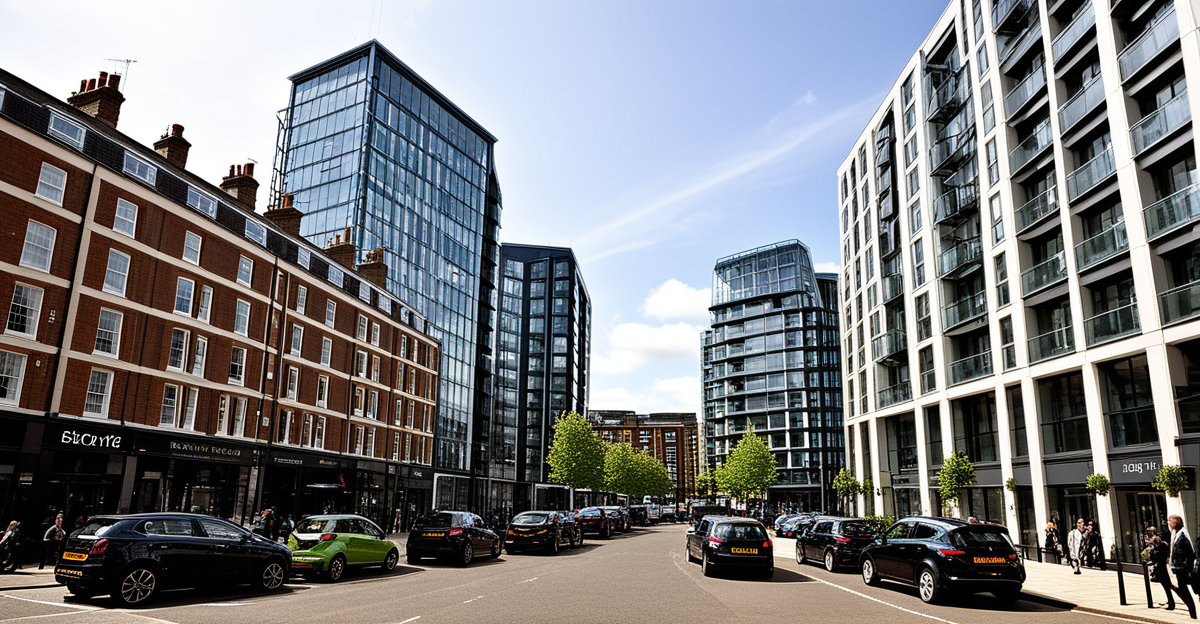The impact of urbanization on UK real estate demand
Urbanization trends in the UK fundamentally reshape the real estate demand, driving shifts in both residential and commercial sectors. As more people relocate to urban centres, the property market analysis reveals increased pressure on housing and workspace availability. This migration fuels demand in established cities and emerging urban areas alike.
Key urbanization trends in the UK show a notable rise in population density within city limits, triggering a need for higher-density housing and mixed-use developments. Urban growth leads to transformation in neighbourhood structures, often encouraging vertical construction to optimise land use. Retail and office spaces evolve to support growing urban populations, thus stimulating the commercial property segment.
Also to read : How Does the UK’s Real Estate Market Impact Personal Finance Decisions?
Moreover, urbanization influences infrastructure investment, which in turn affects property values and market dynamics. Cities experiencing rapid growth often see upgrades in transport, utilities, and amenities, making locations more attractive to buyers and investors. These developments contribute directly to fluctuations in demand, highlighting the complex interplay between urbanization trends UK and real estate demand within the property market analysis framework.
Migration patterns and shifts in housing demand
Urbanization trends UK reveal a strong migration to cities UK pattern, primarily driven by internal migration from rural to urban areas. This internal migration concentrates populations in major cities like London, Manchester, and Birmingham, significantly affecting the housing market shift. The continuous influx increases demand for housing, pushing existing supply toward full capacity in these urban centres.
Also read : What Are the Emerging Trends in UK Real Estate That Investors Should Watch?
One question commonly asked is: How does internal migration influence housing market shift? Precisely, migration to cities UK causes heightened pressure on urban housing supply, leading to increased prices and higher demand for new developments. For example, London alone has seen population growth rates that outpace housing construction, intensifying affordability challenges.
Furthermore, this migration phenomenon triggers diversification in housing needs, with more demand for apartments and mixed-use properties suited to denser city environments. Cities like Manchester illustrate these trends, where rapid population growth directly correlates with a surge in construction projects and redevelopment schemes.
In summary, migration to cities UK plays a pivotal role in reshaping real estate demand through concentrated housing demand shifts that affect urban planning and property market analysis. Understanding these dynamics is crucial for anticipating future trends and addressing housing supply constraints in key urban areas.
City expansion, infrastructure, and property values
City expansion UK closely intertwines with infrastructure development, creating a dynamic that directly shapes real estate demand and influences property values. How does infrastructure development affect property prices? Upgrades such as enhanced public transport, improved roads, and modern utilities increase an area’s accessibility and livability, thereby boosting demand for residential and commercial properties nearby. For example, projects like Crossrail in London have significantly raised property values along its route, illustrating how strategic infrastructure investment can catalyze urban regeneration and attract buyers and investors.
Urban regeneration schemes often coincide with city expansion UK, transforming underused or derelict areas into vibrant hubs. This process stimulates commercial activity and elevates nearby housing demand. As a result, property market analysis reveals notable price uplifts in these rejuvenated zones. The linkage between infrastructure improvements and rising property values underscores the importance of coordinated urban planning when managing growth in rapidly expanding cities.
Moreover, infrastructure development accommodates population growth driven by urbanization trends UK, ensuring cities can support increased density without compromising quality of life. Consequently, investment in infrastructure is not just reactive but a proactive strategy to sustain healthy real estate markets amid ongoing city expansion.
Regional differences in urbanization and the property market
Urbanization trends UK exhibit pronounced regional urban growth, revealing stark contrasts in property market differences between areas such as the North and South, and between urban and suburban locales. For instance, southern cities, including London and its commuter belt, continue to experience intense demand, exacerbating housing affordability issues. Conversely, northern urban centres like Leeds and Newcastle show slower but steadily increasing growth, with relatively more accessible housing markets.
How do these regional disparities affect investment opportunities? Strong economic activity and population influx in southern regions typically drive higher property values and rental yields, attracting investors despite affordability challenges. In contrast, the North’s emerging markets offer potential for growth with lower entry costs, appealing to those seeking value investments.
Broader economic and demographic factors contribute to these variations. Southern regions benefit from more diversified economies and better infrastructure, supporting sustained urbanization trends UK. Meanwhile, northern areas contend with slower economic growth but are bolstered by regeneration initiatives aiming to rebalance regional disparities. Understanding these regional urban growth UK nuances is essential for buyers and developers navigating the evolving property market landscape.
Challenges and future projections for UK real estate
Urbanization challenges UK primarily stem from a persistent housing supply shortage that struggles to meet escalating demand. This shortage results from limited land availability in cities, lengthy planning processes, and rising construction costs. Consequently, many urban areas face intense pressure on housing affordability and overcrowding. Addressing these challenges requires innovative urban planning and policy reforms focused on increasing supply while maintaining quality of life.
What are the key policy responses to urbanization challenges UK? Governments and local authorities are promoting higher-density developments, streamlining approval procedures, and incentivizing brownfield regeneration to maximise existing land use. Additionally, emphasis on sustainable development aims to integrate green spaces and efficient transport solutions, mitigating the impact of increased population density.
Looking ahead, future trends in real estate anticipate continued urban expansion with a growing focus on mixed-use developments combining residential, commercial, and community spaces. Experts suggest that leveraging technology and data-driven property market analysis can better predict demand patterns, enabling proactive infrastructure and housing planning. In summary, confronting urbanization challenges UK involves multifaceted strategies that balance increasing real estate demand with sustainability and long-term urban resilience.








